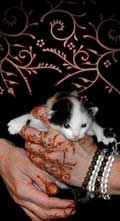 Clicking
on an image will open another window. You can use the second window
to scroll through all the enlarged images associated with this article
Clicking
on an image will open another window. You can use the second window
to scroll through all the enlarged images associated with this article |
The Henna Page Journal |
|
|
Gwyn Thomas: photographer
De Moor J, “The Seasonal Pattern in the Ugaritic Myth of Ba’lu, According to the Version of Ilimiku” Verlag Butzon & Berjer Kevalaer, Neiukerchener Verlag des Erziehungsvereins Neukirchen – Vluyn, 1971 Field H, “Body – Marking in Southwestern Asia” Peabody Museum Papers, Cambridge Massachusetts, Cambridge Massachusetts, 1958 Masse H, “Persian Beliefs and Customs” Human Relations Area Files, New Haven, 1954 Mahlodji, Erfan, “Hennaria, Traditonal Iranian Henna Art” TapDancing Lizard, Ohio, 2002 Tauzin, A; “Le Henne, Art Des Femmes de Mauritanie” Ibis Press, Paris, 1998 Westermarck, Edward, “Ritual and Belief in Morocco” Volumes 1 and 2 Macmillan and Company, Limited, London, 1926
Cycladic Female Figure, 2700 BCE British Museum, GR 1933.10-16.1, London Assyrian Ishtar , 2400 - 2200 BCE, British Museum, WA 118996, London The Assemblies of Lovers, between 1470 and 1551, Bodliean Library, MS Ousley Add MS 24 Folio 1270, Oxford
|
|
|
|||
| [Home] [How] [Why] [What] [Where] [FAQ] [Forum] | |||
